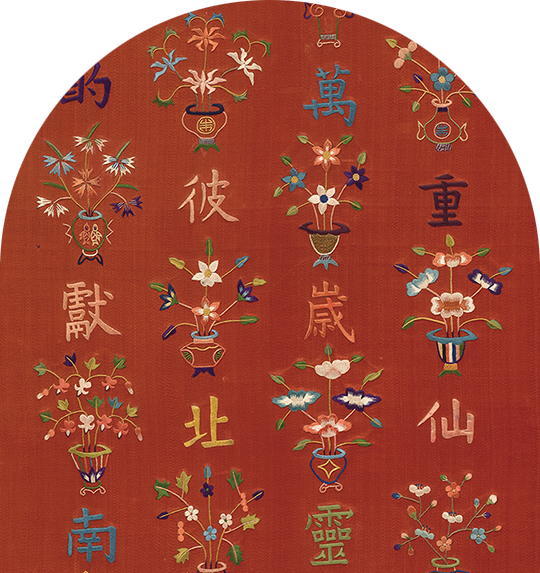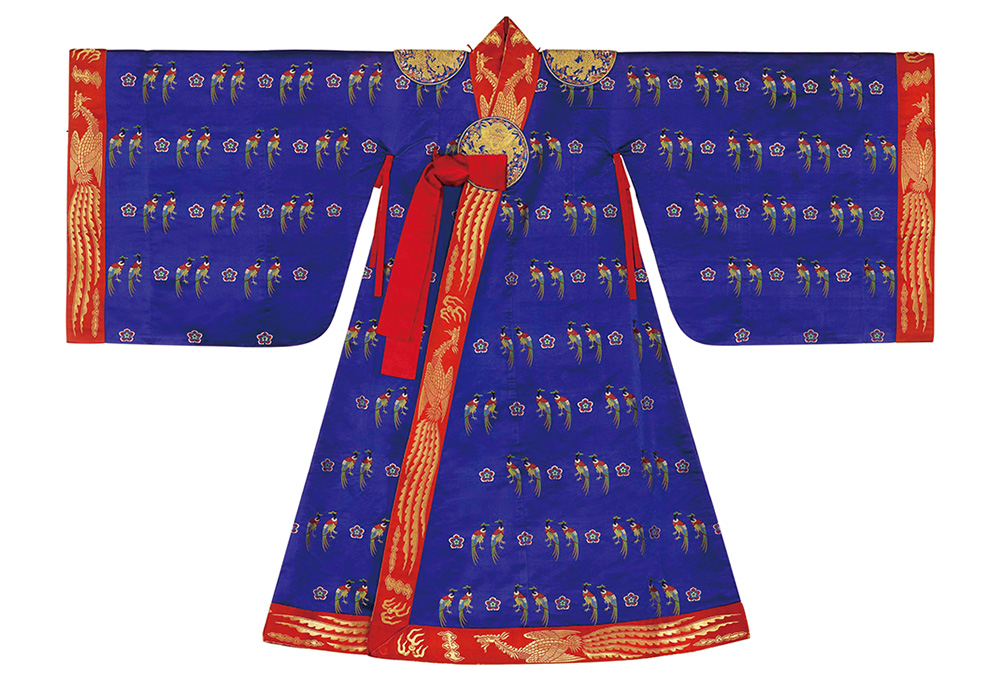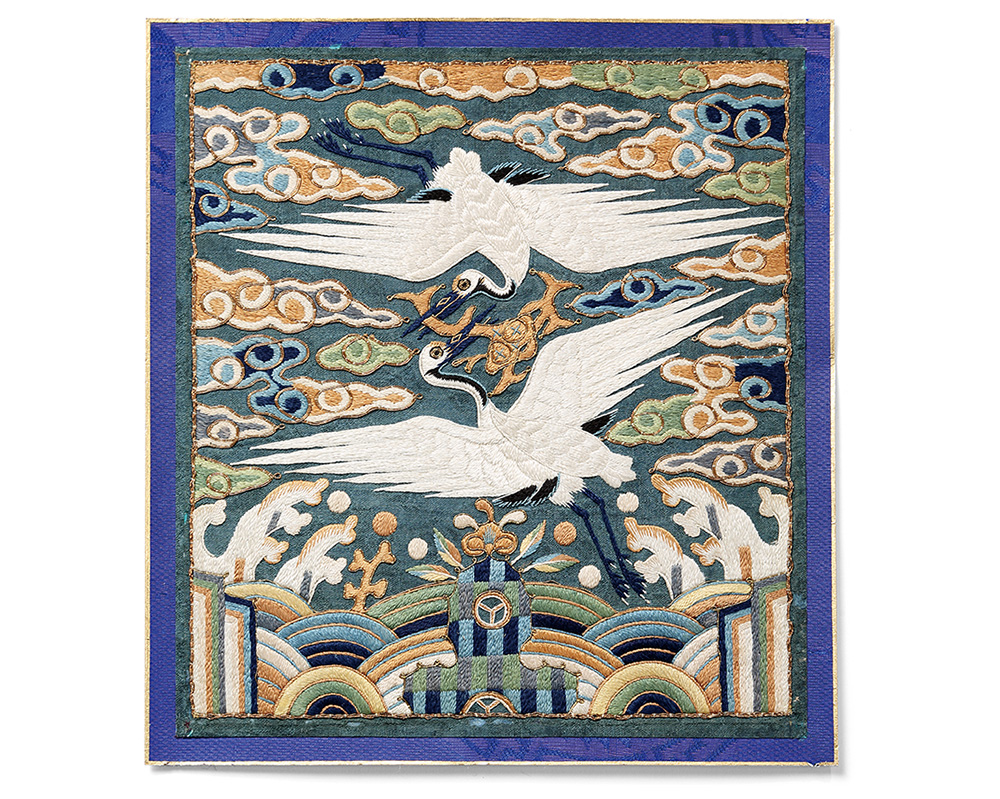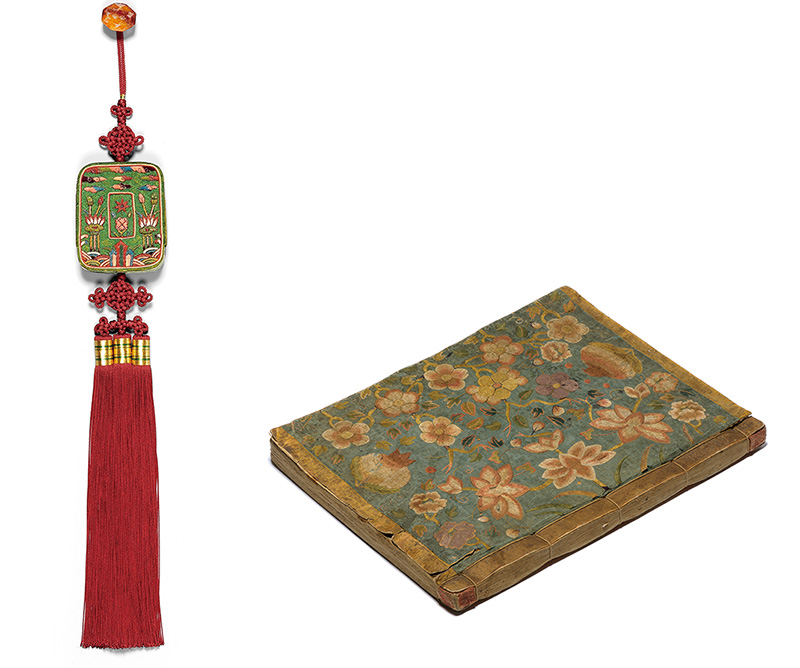Art of Detail
A Stitch in Time
Korea’s love affair with embroidery goes back centuries: It is a craft that has changed along with the currents of culture. And its story speaks volumes about Korea―from prehistory to the present day.
- Written by Tim Alper contributing write
- PHOTOGRAPHED BY National Museum of Korea
If you have ever enjoyed a Korean period drama, you have no doubt been wowed by the extraordinary embroidery on display. In many cases, this goes beyond the details on clothes and also takes in decorative embellishments sewn into furniture and foldable silk screens.
If this is the case, you are looking at modern-day reconstructions of the Joseon Dynasty (1392-1910), the period of history most K-dramas concern themselves with. This also happens to be what most people consider the golden era of Korean embroidery.

But it would be incorrect to think that Korea’s embroidery journey began in 1392. In fact, you can trace the threads of its history all the way back to before the dawn of the Bronze Age―evidence that this form of craft is almost as old as civilization itself on the Korean Peninsula. No wonder its appeal endures even in the days of factory-produced clothing: Its story is quite literally woven into the fabric of Korea. And a careful look at the history books shows that the Joseon period may not have been the golden era of Korean embroidery―but a continuation of a series of many such eras.

The royal robe of the Joseon Dynasty with a pheasant pattern embroidered on silk © National Palace Museum of Korea
Excellent Embroidery
Much about Korean prehistory is lost to the ravages of time and shrouded in mystery and myth. But the archaeological record speaks volumes about embroidery: Digs have uncovered items such as stone and bone sewing needles, as well as crude spindles made of stone and earth.
As Korea entered the Bronze Age, these needles and spindles became more sophisticated. Agriculture began to flourish, and farmers began to grow cotton and hemp―which were used to make fabric and thread. Textile production became a small but thriving industry.
As the world entered the Common Era, Korea became increasingly influenced by goings-on on the Silk Road. China and Persia’s trade boom had knock-on effects that transformed Korea―and revolutionized embroidery. Two historical texts―the Book of the Later Han, a record of the Chinese Han Dynasty from 6 BCE to 189 CE, and the Records of the Three Kingdoms (which covers the period up to 280 CE)―both make mention of the Korean embroidery industry.
Their authors write that Korean farmers cultivated mulberry trees, which were used to feed silkworms, as well as other crops they used to make embroidery-related materials. At one point in the Records, the author writes of how “people” (presumably traders, emissaries or nobles) from the Kingdom of Buyeo wore “clothes hewn of silk, embroidery and wool” when they “traveled abroad.”
By the time Korea entered the Seventh Century, embroidery had become a craft that even royals took up: A key historical document records that Queen Jindeok, the ruler of the Silla Kingdom from 647 to 654, hand-embroidered an item that she sent as a gift to the Emperor of Tang Dynasty China.
By the Ninth Century, embroidery had become a victim of its own success: Official decrees recorded in historical documents show that the government banned the used of embroidered saddles and saddle cushions, while embroidered underwear was also prohibited. As Buddhism began to thrive on the Peninsula, records tell of how prayer halls were draped in fine embroidered silks.

Hyungbae embroidered with two cranes © National Palace Museum of Korea
The Fabric of Korean Culture
People of the Goryeo Dynasty (918-1392) were as keen on embroidery as their predecessors―and, arguably, their descendants. Documents from this era show that the government was again obliged to step in to curb wealthy citizens’ desire for fine embroidery. One writer noted that ministers were instructed to tell their wives not to wear embroidered silk garments and golden hairpins in public. Royal guards, meanwhile, were dressed in “silk robes” embroidered with colorful flowers and birds, with matching floral-pattern embroidered belts.
As the Joseon era dawned, embroidery lost none of its luster, but took on a new meaning. Joseon rulers eschewed traditional forms of religion in favor of Confucian values and a rigidly hierarchical social system. For Joseon society to thrive, it was vital that everyone knew where a person stood on the hierarchical ladder. So embroidery specialists were asked to help.
They responded by creating stunning fabric “breastplates.” Known as hyungbae, these were the period’s equivalent to military rank insignia. They were embroidered into the front and back of garments―meaning that one could identify a person’s standing by taking a look at the embroidery they sported.
By the later part of the period, an entire class of embroidery craftspeople had emerged, with items custom-made for domestic and foreign buyers. The towns of Anju (now in North Korea) and South Jeolla-do Province’s Sunchang County became the industry’s twin centers of gravity. And two distinct forms of embroidery were born: gungsu, which catered to the royal court, and minsu, or embroidery for common folk.
As the industrial age arrived in the 20th Century, new clothing-related technology began to appear, allowing entrepreneurs to mass-produce embroidered items. But in the 1970s and 1980s, the government began to incentivize and officially recognize the work of traditional craftspeople who stuck to time-honored embroidery methods.
Instead of being swept away by the tide of modernization, Korean embroidery has evolved. You will still find embroidered garments―both hand-crafted and machine-made―at Korean weddings, fine furniture stores and on TV screens. And if you look carefully, you will find the wondrous stitches and patterns of embroidery on every page of Korean history.
(Left) Norigae (a tassel-like accessory worn on a woman’s hanbok) from the Joseon Dynasty with beautifully intricate embroidery
(Right)The front of a book decorated with an embroidered Buddhist scripture © Seoul Museum of Craft Art





